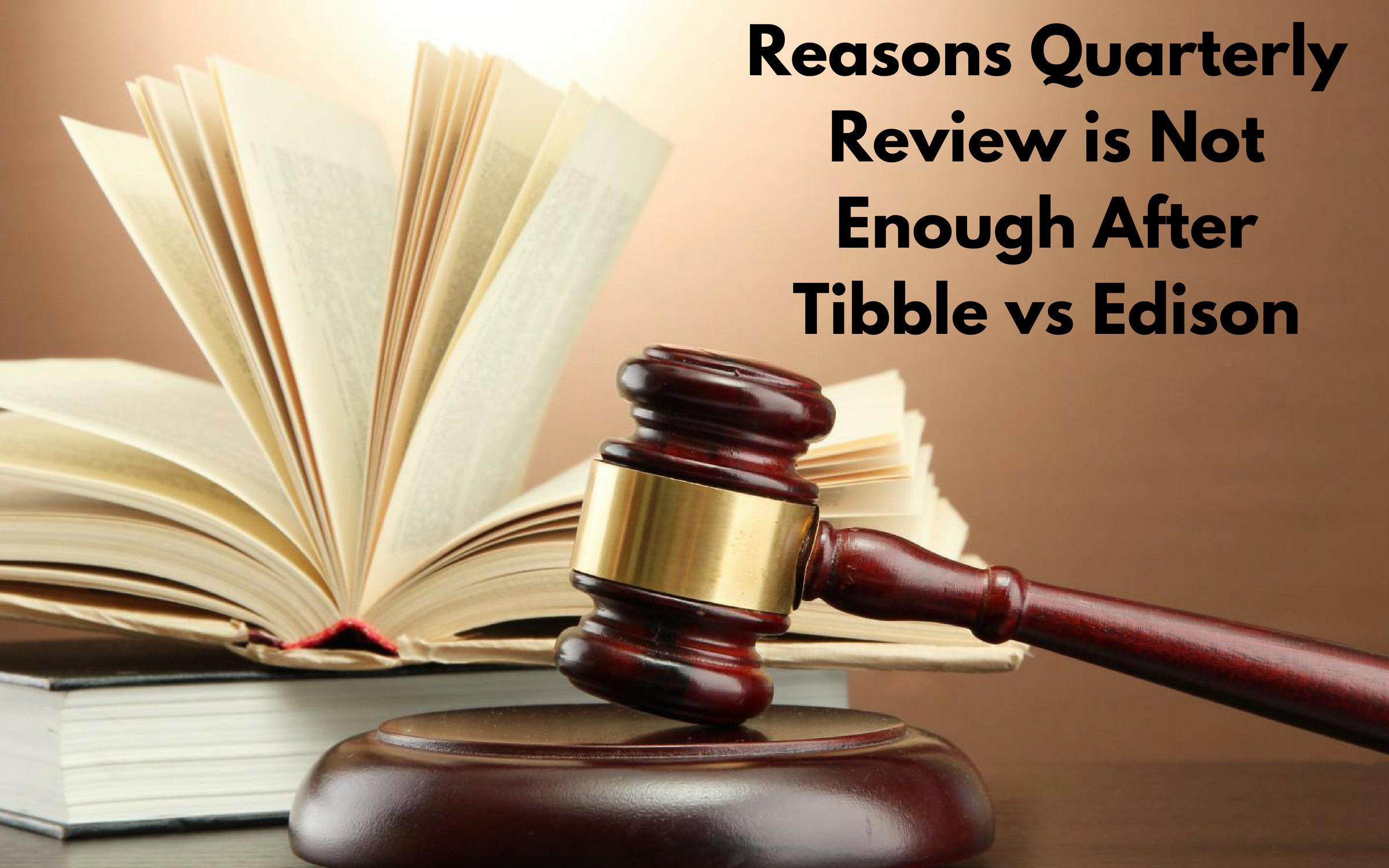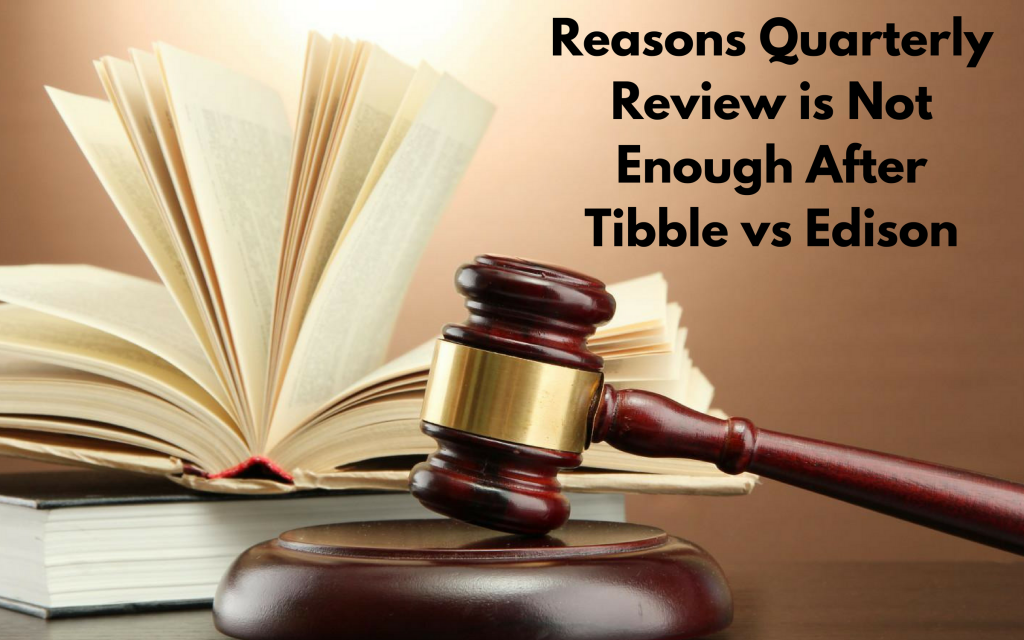
How Continuous is Continuous? Reasons Quarterly Review is Not Enough After Tibble vs Edison

As a fiduciary to an ERISA plan a few years ago you could have been forgiven to think that you are not responsible for decisions that were made long before you arrived on the scene. But you would be wrong.
The Supreme Court ruling in Tibble vs Edison essentially stated that it is not enough for a fiduciary to make a prudent decision to invest in a fund when it is brought into the plan menu. A fiduciary must continuously monitor ‘at regular intervals’ and make decisions with the same vigor as if it was the decision to first admit a fund into the plan. There you have it. Every single review should be as thorough as if you are proposing the menu for the first time.
Tibble vs Edison was sent back to the lower courts for reconsideration with an ongoing monitoring duty, established by the Supreme Court. And now after 10 years of litigation the case is approaching its conclusion. The ruling issued Aug. 16, 2017 by Judge Stephen V. Wilson of the U.S. District Court for the Central District of California exhibits and reaffirms plan-saving practices for 401(k) advisers and plan sponsors.
From the SCOTUS decision:
“Under trust law, a trustee has a continuing duty to monitor trust investments and remove imprudent ones. This continuing duty exists separate and apart from the trustee’s duty to exercise prudence in selecting investments at the outset.”
“The trustee must systematically consider all the investments of the trust at regular intervals to ensure that they are appropriate.”
The key question that advisors and plan sponsors must ask themselves is: How quickly should I fix my plan? The answer from Tibble vs Edison is something like – right now! Defendants in Tibble vs Edison argued that 2-5 months were necessary for them to fix the problem with share classes, once they found out about it. To us, it actually does seem like a reasonable argument and 2-5 months does not seem excessively long in the world of investing. But Judge Wilson’s opinion actually makes it clear that for most problems with plan menu – the fix should be done “immediately”. If 2-5 months is too long to avoid fiduciary liability, then advisors need a whole new set of tools to monitor their plans. This would mean that quarterly review is simply not enough.
That is why we at RiXtrema released 401kFiduciaryOptimizer 2.0 with Plan Monitor. The new version of our software continues to analyze deficiencies of retirement plans to communicate with CFOs, but it now includes a tool called Plan Monitor. Plan Monitor monitors your plans every day, sending you an immediate report as soon as potential problems are found. Potential problems could include better share classes available, lower cost identical investments are available, performance problems for your funds vs identical lower cost investments.
Action Step for Plan Sponsors: In ERISA cases, process is king. Courts will not punish fiduciaries for underperformance; they understand that in hindsight it is very easy to sue after investment losses. As a fiduciary you must make sure that the process you employ is systematic both in scope and in periodicity. In addition to regular review, you must have tools that will monitor your plans on an “ongoing basis” as per Tibble vs Edison. You must also make sure that the process for periodic review of funds is well documented and consistent across funds and through time.
Summary
Significant attorney fee awards have increased incentives to litigate. This means that not only large, but also medium, small and even ‘micro’ plans will be the focus of legal action. Do not be misled by the fact that lawsuits to date have mostly focused on large plans. Recruiting of plaintiffs for ERISA litigation is now done through billboards, TV ads, a familiar trend. Tibble vs Edison contained one last surprise. Turns out that waiting for a ‘quarterly’ review can no longer help with defense when dealing with plan menu. ERISA courts expect immediate action when the problem is known and fiduciaries are expected to know their plan. The solution is in adopting a ‘continuous review’ framework and using monitoring tools. Can you afford to risk going without a truly continuous review of your plans?



Pingback : 403(b) Plan Fiduciaries Take The Baton from 401(k) Litigation
Pingback : How to Create Tremendous Savings For Plan Participants Without Reducing Your Fees
Pingback : Case Study: Here is How a Prudent Process Approach Prevails